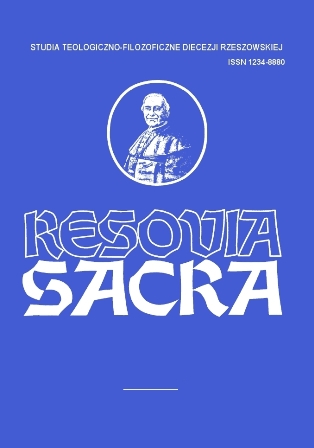
We kindly inform you that, as long as the subject affiliation of our 300.000+ articles is in progress, you might get unsufficient or no results on your third level or second level search. In this case, please broaden your search criteria.

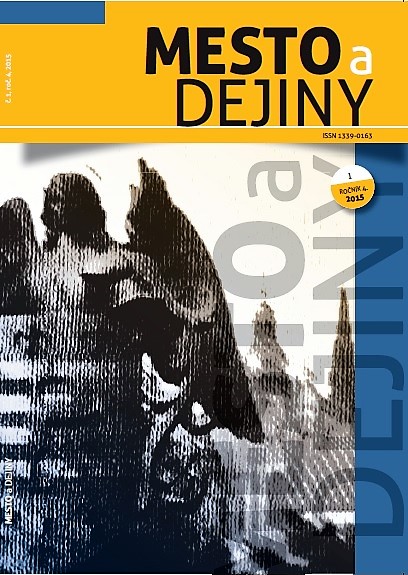
There are testaments from the 16th century preserved in Kremnica state archive. They are written in Latin, German and in one sample also in Slovak language. Last wills prepared a man for a death in spiritual and secular (division of property) way. Testaments eliminated conflict between secular property and desire for an eternal life. Formally testaments consist of several parts – invocation, intitulation, profession of faith, passages about human mortality, composing of the last will and redress of sins, heritages of property, confirmation, corroborating and date formulas. The content of the testaments is an important historical source for economic, law, culture, regional history and also history of material culture and everyday life.
More...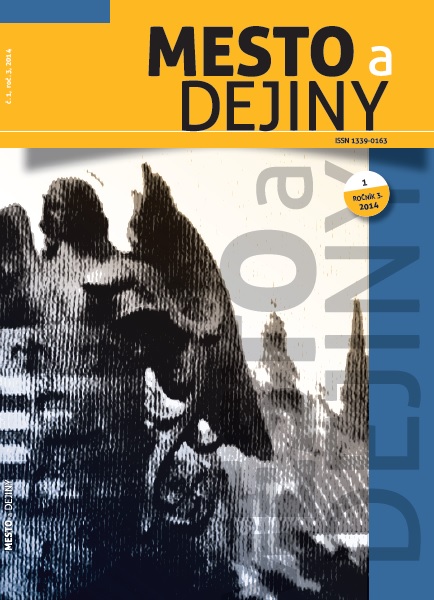
The article presents the program of sexual education prepared and offered by Krakow Branch of the Planned Parenthood Association in the wider context of socio-political situation in Krakow (1956 – 1989). Since the beginning of the Association’s existence, the special attention was paid to the development of educational program, which concerned the different aspects of „family life“. The article is going to answer the questions about its goals, the educational tools used to achieve them and its social targets. To accurately determine the position of the Association in the city‘s community I will analyse its foundation and activities in wider context of the pre-war traditions of the organisation and the activities regarding premarital counselling undertaken by the Krakow Catholic Church.
More...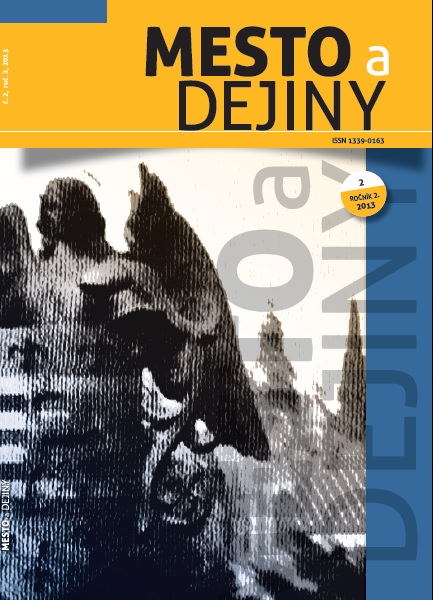
The study deals with suburban churches and hospitals in medieval Košice. Author evaluates historiography published on this topic and presents results of detailed research of town books and tax registers. The aim of contribution consists of characterizing of the development, i.e. origins and cessation of the buildings, their approximate geographical location as well as the position in the church administration of Košice. The existence of three churches and two hospitals surrounding the walled town has been proved by the research. The main and also the oldest hospital with a church had patrocinium of the Holy Spirit. It laid in front of the Lower Gate on south. As the second one, the church of St. Ladislaus was erected in the northern suburb. The last such objects built here in the Middle Ages were leprosarium and church of St. Leonard on the west side. In addition to this, there was constructed one more church in the town´s cadaster, staying in the village of Košická Nová Ves.
More...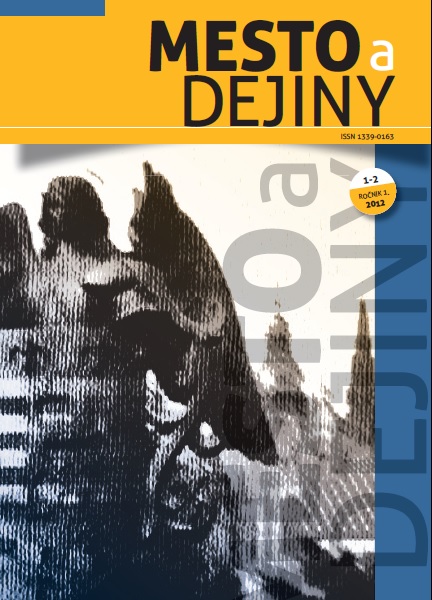
Till now, the modern period of the Kraków Dominican Convent was not searched and describe well. Also, in Europe one can find limited number of the Dominican Convent education system information and the convents history studies using prosopographic approach were rather exceptional. That’s way in this paper sources on the history of the dominican studium generale will be exemined. Search querry in cracow archives shows a great variety of important aspects connected with dominican education. For exemaple friars mobility during 16th – 17th centuries, linkages with the university intellectualists, culture transfer between the middle class society and the monastic one.
More...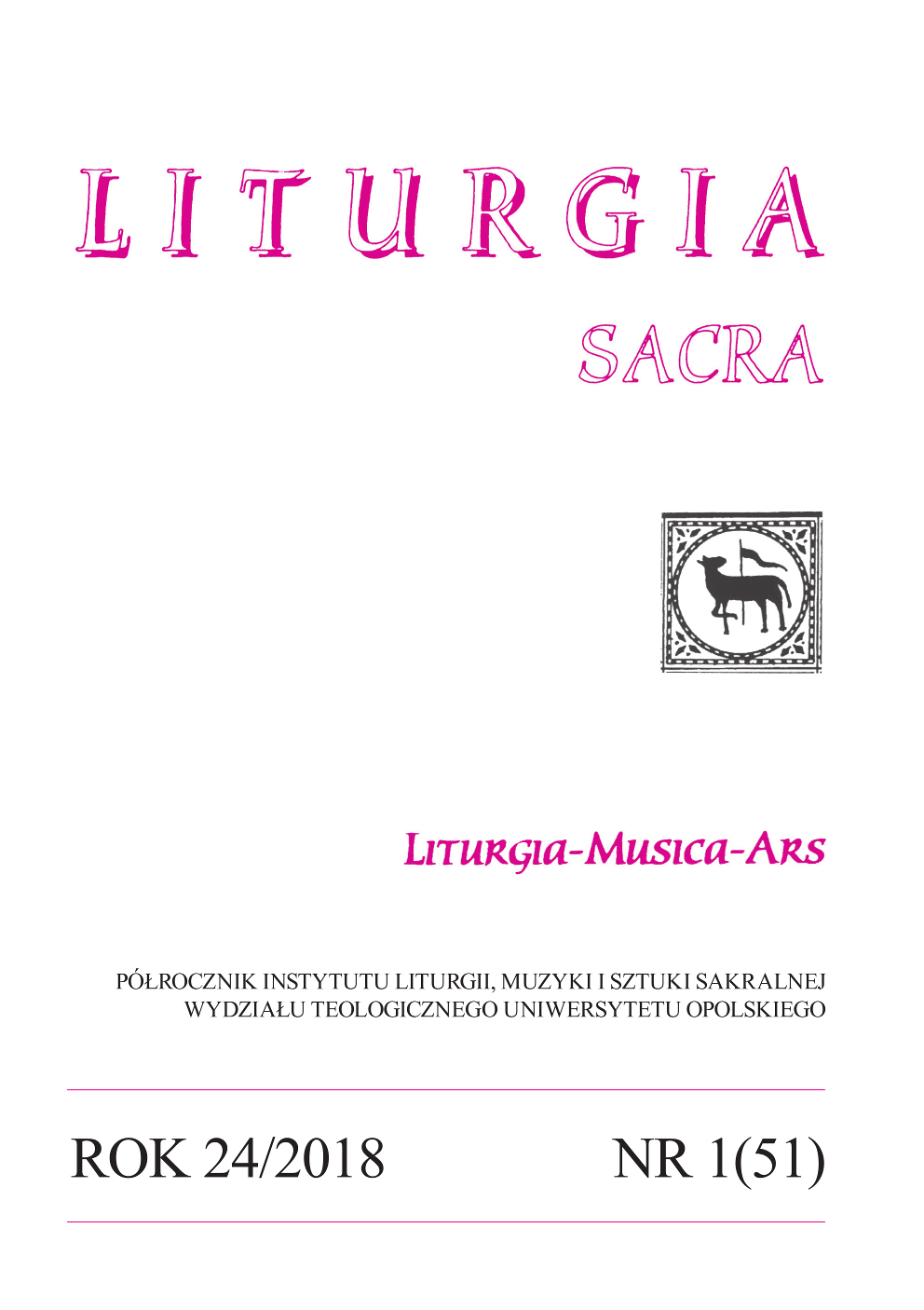
The term pallium derives from Latin and signifies “coat”. It is a strip made of white wool, worn on shoulders, used as an element of a liturgical attire of a Metropolitan Archbishop. The pallium is decorated with six Greek crosses, three pins and silk black trimmings. Its meaning is to emphasize the liturgical function and power of a Metropolitan Archbishop and his unity with the Holy See. The liturgical rite for imposing the pallium in the history had many modifications, and the present form was approved by Pope Francis in 2015. The rite itself underlines the pastoral responsibility of the Shepard towards his flock. It is a visible sign of unity, of the communion with Holy See and it is also a call for evangelical fortitude.
More...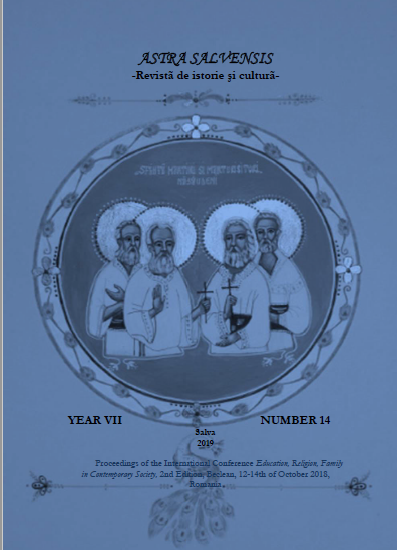
When we are talking about education, generally, we refer to a formationprocess that is speccific to humans. That, as education consists into a dialogue between persons, soit involves at least two individuals: one that is the communicator and the other one that receives themessage. But when we are talking about religious education, the factors involved in it multiply,because in this equation there are factors of divine and human nature.From the divine side, GodHimself and His Teandric Institution, the Church, which He established on earth for this verypurpose, are involved. From the human side, by virtue of teandria, the Church is involved, and withit: the family, the school and the religion teacher, as well as the pupil, that is the subject receiving theeducation. This paper aims at presenting the specificity of each of these factors and their correlation,so that the purpose of religious education is fulfilled.
More...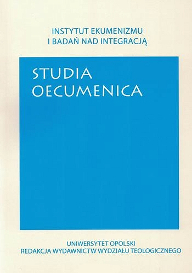
Na drodze dialogu ekumenicznego powstają różnorodne inicjatywy – na poziomie hierarchicznym, naukowym, lokalnym etc., które z jednej strony są wynikiem mozolnego dyskursu, modlitwy, spotkań, z drugiej zaś świadczą o chęci uczestnictwa w toczącej się debacie publicznej i przemianach społeczno-kulturowych. Ze względu na fakt, że ten głos jest zabieramy regularnie i przez wielu partnerów dialogu, tym bardziej można zauważyć jego rezonans w przestrzeni międzynarodowej, krajowej czy lokalnej. Przykładem tego ekumenicznego zrozumienia jest wspólny dokument Konferencji Episkopatu Niemiec i Rady Ewangelickiego Kościoła w Niemczech pod znamiennym tytułem: Demokratie braucht Tugenden („Demokracja potrzebuje cnót”). „Rehabilitacja” cnót w przestrzeni społeczno-politycznej wypływa z wizji antropologicznej człowieka, opartej przede wszystkim na jego istocie, a nie funkcjonalności. Metafizyczno-deontologiczne spojrzenie na człowieka i jego relacyjne odniesienia pozwala ugruntować pogląd, że cnota sprawiedliwości i solidarności wyznaczają kierunek zrównoważonego rozwoju społeczeństwa.
More...
The article analyses the subject of Christian-Jewish relations in historical and theological terms. In the historical part, the following periods are briefly discussed: New Testament, patristic, medieval, modern and contemporary. In the theological part, the common elements of Judaism and Christianity are first presented. Herein: Jews and Christians identify their faith and action through the interrelations between justice and love; they base their beliefs on the common “scripture” (the “Old Testament”); they understand each other as the people of God; they profess the one God, the Creator and the Redeemer; they express their faith in worship, in which there are many similarities;Jews and Christians also live in the expectation for the common history of God with His people, whose fulfilment they expect. Distinctive elements (the divergence of the ways) are: the belief in Jesus, the Christ; the interpretation of the Scriptures; a different understanding of what God’s people are; different developed piety. In conclusion, it is said that the rediscovery of a positive relationship with Judaism facilitates a positive formation of Christian identity and memory.
More...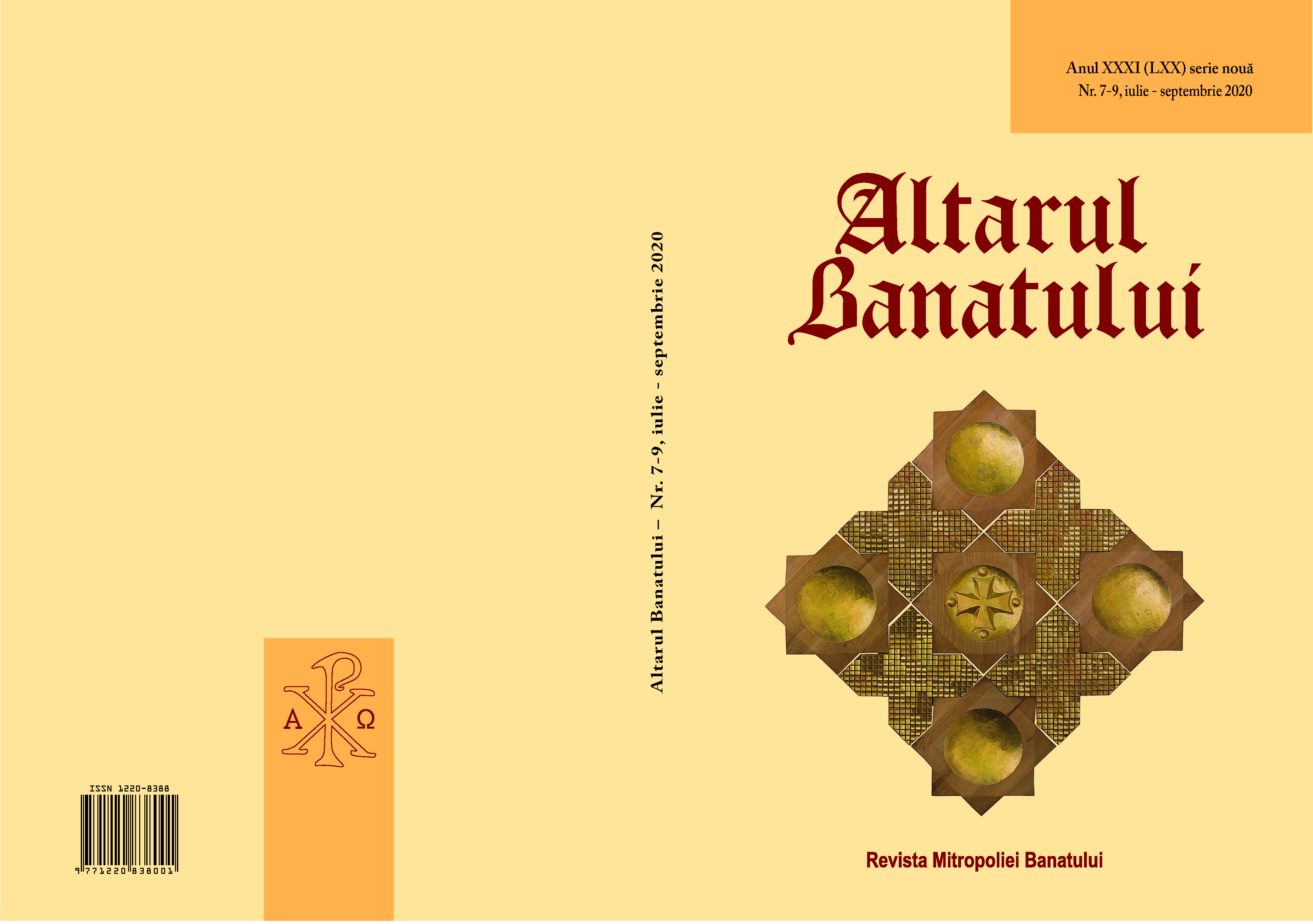
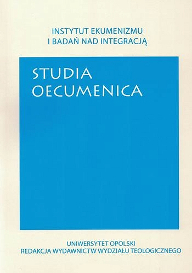

Artykuł jest poświęcony zagadnieniu roli religii w życiu współczesnych społeczeństw w ujęciu wybranych autorów publikujących w Ośrodku Myśli Politycznej. Religia stanowi dla nich niezbędny dla państwa fundament aksjologiczny, wokół którego możliwe jest zbudowanie wspólnoty obywatelskiej. Zapewnia ona państwu wartości potrzebne do prawidłowego funkcjonowania, których jego instytucje same nie są w stanie wytworzyć. Odniesienie do transcendencji pozwala ponadto na pogłębioną interpretację losów danego społeczeństwa na przestrzeni dziejów. Współcześnie chrześcijaństwo stanowi jedyną liczącą się alternatywę dla dominujących w świecie zachodnim prądów liberalnych. Zapewnia ponadto ciągłość między europejskim dziedzictwem kulturowym a współczesnością. Poglądy omawianych autorów sytuują się w ramach nurtu konserwatywnego.
More...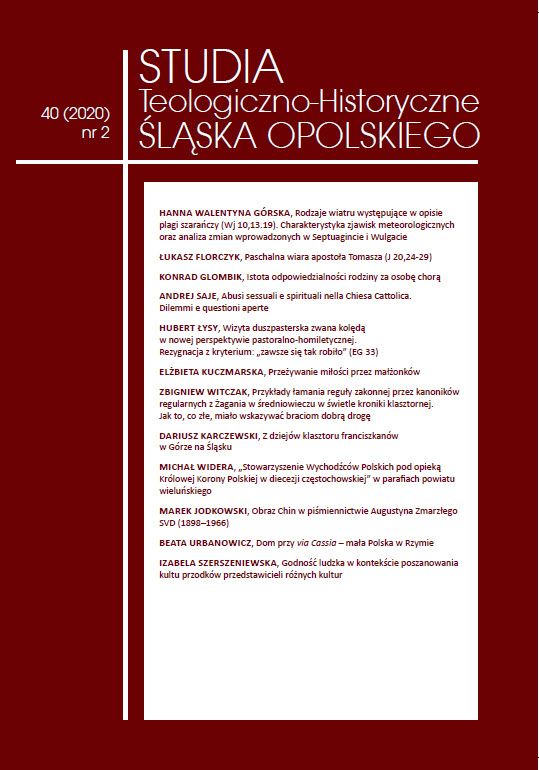
Życie wewnętrzne w średniowiecznych klasztorach nie zawsze przebiegało w zgodzie z przyjętymi zasadami, które z założenia powinny być przecież rygorystycznie przestrzegane. Dotyczyło to zarówno braci, ojców, wyższych funkcyjnych klasztornych, a nawet samych opatów. Kronika klasztoru kanoników regularnych w Żaganiu dostarcza nam wielu przykładów łamania reguły zakonnej. Nadużywanie alkoholu, zbyt częste kontakty z kobietami czy nieposłuszeństwo wobec przełożonych – to tylko niektóre z problemów, z którymi borykali się żagańscy kanonicy. Wydaje się, że w takim zabytku dziejopisarstwa średniowiecznego pokazywane powinny być raczej pozytywne przykłady, które miały zachęcać do cnotliwego postępowania, a nie negatywne czyny, a nawet zbrodnie. Okazuje się jednak, że prezentacja tego, co złe, miała charakter dydaktyczny. Pokazywała czytającym, jak nie należy postępować, czego unikać, aby nie ściągnąć na siebie i cały konwent nieszczęść, oskarżeń albo gniewu – czy to braci, czy przełożonego konwentu. Informacje o grzechach i występkach pełniły również funkcję kontrastującą, podkreślając, jak wprowadzone reformy życia wewnętrznego przez dobrych opatów wpływały na zmiany w sposobie postępowania i życia całego konwentu. Dzięki zaprezentowaniu pozytywnych i negatywnych przykładów te pierwsze widzimy jako jeszcze lepsze, jeszcze godniejsze naśladowania i zapamiętania.
More...

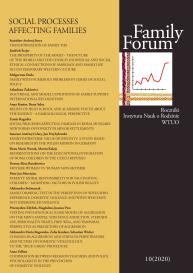
Kontekst badań: Szczepienia ochronne dzieci są dobrodziejstwem dla zdrowia indywidualnych osób i epidemicznej ochrony społeczeństwa. Obserwowane narastające lawinowo zjawisko uchylania się przez rodziców od szczepień dzieci wymaga pogłębionych badań pod kątem ich odpowiedzialności moralnej za zaniechanie działania.Cel badań: Zweryfikowanie hipotezy badawczej, która brzmiała: Odpowiednio silny wpływ czynnika modyfikującego postawy rodziców wobec szczepień ochronnych dzieci może zmniejszyć odpowiedzialność moralną rodziców za niepodjęcie obowiązku szczepiennego.Metoda badawcza: W badaniach zastosowano desk research, a więc analizę danych zastanych, z uwzględnieniem dostępnych dokumentów, badań i publikacji, i ich konfrontacja z kryteriami wartościowania czynów ludzkich, szczególnie w zakresie przeszkód aktualnych.Osiągnięte wyniki: Analizy potwierdziły, że odpowiednie nasilenie przeszkód (zwł. niewiedzy niepokonalnej i strachu), często na skutek celowej dezinformacji (disinformation) przez ruchy antyszczepionkowe, znacząco zmniejsza odpowiedzialność moralną rodziców za odmowę szczepienia dzieci.Wnioski: Najskuteczniejszym mechanizmem zapobiegania odrzucaniu szczepień jest celowana i holistyczna edukacja rodziców i społeczeństwa w zakresie szczepień i szczepionek.
More...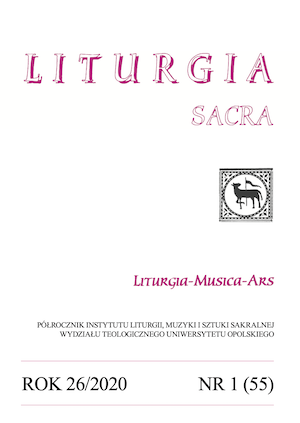
W początkach XX w. benedyktyńskie opactwo Maria Laach w Niemczech zaczęło ogrywać decydującą rolę w europejskim ruchu liturgicznym. Przyczynił się do tego długoletni opat (1913–1946) Ildefons Herwegen, który zachęcił mnichów do apostolatu i studiów liturgicznych. W opactwie kładziono nacisk na piękne sprawowanie liturgii, do której mnichów przygotowywały konferencje liturgiczne. Formacją liturgiczną objęto duchowieństwo, środowiska akademickie, młodzież oraz świeckich katolików. Prowadzono tam badania naukowe dotyczące historii i teologii liturgii. Szczególnym osiągnięciem była wypracowana przez Odo Casela teologia misteryjna. W opactwie przeprowadzono także eksperymenty liturgiczne, które stały się podstawą posoborowej reformy liturgicznej. Opactwo prowadziło także działalność wydawniczą. Najważniejsze wydawnictwa to czasopismo „Jahrbuch für Liturgiewissenschaft” oraz seria wydawnicza Ecclesia orans.
More...
Interesującym zjawiskiem w oficjach o Św. Katarzynie z Aleksandrii jest modlitwa (kolekta) „Deus qui dedisti legem Moysi…”. Nie ma ona jednej, uniwersalnej wersji (jak np. „Pater noster”). Autor podzielił tekst kolekty na kilkanaście elementów (fraz), wskazując, że niemal wszystkie one mogą być rozmaicie kształtowane. Niektóre z nich są charakterystyczne – tym samym mogą wskazywać na proweniencję księgi liturgicznej.
More...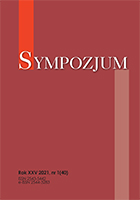
Report from the scientific symposium Mary, Mother of God, in theology and Christian art, Stadniki, May 6th, 2021
More...
The centuries–old model of the Church as a community of lay people and clerics who inspire and guide them was entering a functional crisis. In the era of revolutions and liberalism, the laity found itself in a new, contradictory position: at the same time, they are believers loyal to the Church and citizens loyal to secular society. Looking for a way out of the crisis, the Church relied on the democratic capacity of the laity, who promoted Christian values with their social presence, but also fought for the Church’s political rights. The organized Catholic laity had a specific role: to form, culturally and morally, the lay classes. The prehistory of the creation of the Catholic lay movement (Catholic Action) gives insights into the complexity of societies in the second half of the 19th, and the beginning of the 20th century, but also the high level of inventiveness of both the laity and the hierarchy in activating the laity, which will turn out to be an epoch–making success of the Church of the 20th century.
More...